Craig Calhoun on Protest Movements
Protest movements take many shapes and forms, from feminism and Tiananmen Square to today’s Occupy protests. But how are protest movements formed and organized? How and why do they succeed or fail, and what if anything, do they have in common?
American sociologist Craig Calhoun, director of the London School of Economics and Political Science, has spent a large part of his academic life studying protest movements. In the latest edition of Social Science Bites, he discusses the organization and formation of protest movements frames a wider discussion on social sciences’ contribution to this analysis and understanding of social change and movements.
Calhoun also discusses the ebb and flow of social sciences in less dramatic settings, like the red-blue divide in the United States. “I would like to think that social science often raises the quality of both sides of the argument — that if we have better knowledge about an issue, you can make better left-wing or better right-wing arguments about the issue,” Craig tells Nigel Warburton. “But because these things are so argued over, then the scientific research becomes controversial. Now of course, natural science is not immune to this; think of the issue of evolution and fights over evolution, where this becomes just as controversial as any issue that social scientists study. We also, though, should recognize that social science does require interpretation that cannot be reduced to perfectly objective results.”
Click HERE to download a PDF transcript of this conversation. The full text also appears below.
To directly download this podcast, right click HERE and “Save Link As.”
Social Science Bites is made in association with SAGE. For a complete listing of past Social Science Bites podcasts, click here.
***
David Edmonds: Protest movements take many shapes and forms, from feminism, to the demonstrations in Tiananmen Square, to today’s Occupy. But how are protest movements formed and organized? How and why do they succeed or fail? What, if anything, do they have in common? The sociologist and director of the London School of Economics, Craig Calhoun, has made the study of protest movements a lifelong project.
Nigel Warburton: Craig Calhoun, welcome to Social Science Bites.
Craig Calhoun: Thanks, and hi Nigel.
Nigel Warburton: The topic we are going to focus on is protest movements, and this is a topic that you have done quite a lot of empirical research on. Could you say a little bit about that to begin with?
Craig Calhoun: Well, I’ve worked on movements in a variety of different settings from historically in the nineteenth century, in Britain, France and the US, to the Tiananmen Square protests in China in 1989, and on into thinking about Occupy Wall Street and more recent protest in the US and Europe. One thing I’d say is that protests are a tactic, that people use protests as one of the tools to try to get media attention, to try to get issues put on the public agenda, to try to get policy-makers to address those issues. But it’s only one tactic, so the same groups may also be engaged in other kinds of activities at the same time. A movement is the longer process of change; when we talk about, say, the feminist movement, there were protests, but they weren’t the whole thing.
Nigel Warburton: I’m really interested how a social scientist approaches something like the protests in Tiananmen Square in 1989, now there were journalists there, there were historians who have written about these events in relation to China, what does a social scientist have to contribute here?
Craig Calhoun: I’d like to tell you that because I was a social scientist I knew these were coming and I planned a research project around it. In fact I was teaching in Beijing that year, and so my students were part of the protest movement, and I was able to observe some of the early developments that helped pave the way to it. Social scientists are interested in movements and protests because of their role in bringing social change, because they are a kind of social action that requires social organization that depends on social relationships. So to give you an example from China, one of the things that you notice is that there are large crowds, big marches, big gatherings in Tiananmen Square. Well, how is that organized, who comes out, how do they get out? People marched often in groups that corresponded to their courses of study and their classes in the university. The ties, the links that they had to each other from their dormitories, from their classes, were used to organize the protest. Then when they put tents in, and camped out in Tiananmen Square, they were also using pre-existing organizational ties, but they were trying to give a symbolic message that they were capable of organizing, the people could be orderly, could be organized, and therefore the government claim that without the government there would be no order, was shown to be false. So on both the input side, how do things get organized, and the output side, what message gets sent, there is a strong social science element.
Nigel Warburton: That case was particularly interesting because the message sent from Tiananmen Square as received in the West was about democracy, but to some people there, as I understand it, it was about corruption.
I would like to think that social science often raises the quality of both sides of the argument. That if we have better knowledge about an issue, you can make better left-wing or better right-wing arguments about the issue.
Craig Calhoun: Well the two are not unrelated, but right, the slogans that were used were often different in English and Chinese, and people picked up on different things. So as you can imagine, reporters who spoke only English received those messages the students put in English. And because this was a protest of students, and to some extent intellectuals, they were often people who spoke English and could craft the message, so they knew that a message about democracy would have a wide appeal. That didn’t mean that they were not sincere about democracy, but that that message would catch the reporters. They knew that a message about corruption would catch members of the Chinese working class. It’s just like a Western politician, who has different messages when he’s speaking to a trade union group, and when he’s speaking to a group of university students, and when he’s speaking to parliament. Messages are crafted for occasions. The story of the protest, I think, had several roots. One of them was corruption, the terrible inefficiency and even theft of taking money and using it for bad ends. Another was the extent to which the system failed to deliver economic development and a strong country – that corruption undermined the government. So you had a government that was strong, and people might object to some of the uses of power, but by being corrupt it wasn’t able to do the things people wanted a government to do. So there was a message of ‘we need China to be a stronger country, the government needs to be less corrupt, more efficient’, and then that connects to students in particular because, as young intellectuals, they’re thinking what you need are well-trained people who have the expertise that we have. The message about the government was partly if you aren’t creating opportunities for well-educated people to assume leadership roles, you’ll make the country weaker, and that then connected to a national self-strengthening message, we want China to be strong. They knew that that wasn’t the message that foreigners wanted to hear, but it also then connected to democracy, that the people want something better of the government.
Nigel Warburton: Now, I can see how that sort of social analysis sheds new light on events that we’ve perhaps had caricatured in some of the media, but is it purely descriptive, are you simply analyzing what’s happened, or is there some sense of normativity there? Do you want things to change? Is there, built into your social science, some kind of critique of what’s going on?
Craig Calhoun: Social science opens up at least three different registers of engagement here. One of them is description, and description is really important because we want to know, in thorough and balanced ways, what goes on, and what went on historically. So, part of the description comes to be, oh, this wasn’t the first time there were large-scale protests in Tiananmen Square, it had been used before, how similar, how different it is, so a description can be pretty informative. Then there’s a causal analysis, why did this happen? Why did it happen when it happened? What were the necessary conditions we might not have known about that were part of making this protest happen? And, in fact, there were people organizing and getting ready for this protest months before anything happened in public, and so tracing the causal chain of events that makes it possible becomes important. But the third then, is engaging normative questions, having a critical understanding. That doesn’t just mean saying ‘I object to it and I criticize it’, it may mean asking ‘well, why did they do it this way, what were the other possibilities, would it have gone better if they tried a different tactic?’ And social science can open up a variety of avenues for critical analysis of movements, as other social phenomena, and anyone reading that social science can bring their different values to it. You come with the value, that say, ‘I would like there to be a more widespread egalitarian popular participation because I believe in democracy’. Then you might have a criticism of the elitism of the students as intellectuals who tended to want to keep this a very intellectually focused protest, and not reach out as much to workers, but that’s a question partly of the values, but partly of knowing descriptively how much did they reach out to the workers, knowing whether they had connections and channels, whether that was even possible, and knowing the reasons why they didn’t, and so all of those are part of social science.
Nigel Warburton: How did you go about researching what was going on in Tiananmen Square?
Craig Calhoun: It’s a great question, and in this particular case it gives me the chance to illustrate different social science methods, because my research was based on multiple methods. That’s not always the case. But here I was living in China, indeed in university-owned housing there, with students, and so I was able, in firsthand observation, to see this growing, to talk with people before some of the protests, to follow the marches into Tiananmen Square from the Haidian District, to spend time with the people during the occupation, and so forth. So firsthand participant observation, that is walking alongside them during the march, is the first way in which I was gathering information. The second part of this is with a group of students, I developed a questionnaire, and we did a sample survey of the occupation of students who were engaged in the occupation of Tiananmen Square to try to find out what it meant to them, and to try to find out what differences there were, for example, did people from Beijing, or from the provinces look at this differently, from different universities or different fields, did scientists look at this differently from humanists, or social scientists, and indeed they did, so we used survey methodology. I then followed up by doing retrospective interviews. Over the next couple of years, I went and interviewed leaders of the protest, and then others who’d been involved in the protest in a different way, using a kind of oral history technique to find out what they could tell me about this. And finally, I used documentary research, which is more common to historians, to find out what had been printed in different leaflets, what the government police reports, to the extent they were available, had said, what the media had reported, and so forth, about the events. I even used film: I went to CNN’s archive of footage that they had acquired to look at many different films.
I’ll give you a quick example of why it matters. As a participant observer getting firsthand knowledge, which we often value a great deal. But you have a kind of worm’s eye view, not a bird’s eye view; you’re right in the middle, so if you’re in the middle of literally a million people in Tiananmen Square, you hear and see what is going on right around you, you don’t get a picture of the whole thing. But using film as a source, you can see it from different angles. Ah, here’s what it looked like from the Beijing Hotel, here’s what it looked like from the monument of the people’s martyrs, and you can get a bigger overview of what’s going on. Even in estimating crowd size, I did things like figure out how many people stood on one of the paving stones; there are paving stones several feet square that pave Tiananmen Square, about eight or nine people stand on one of those, and then later, how many of them are there, how much open space and how much is filled with the monument of the people’s heroes or other things, so to be able to say was it a quarter of a million, or a million and a half, is something that actually takes a little bit of work.
Nigel Warburton: Now, calling yourself a social scientist, obviously there’s the social bit, but the science bit is sometimes less obvious to outsiders. In a case like this, is there a scientific way of analyzing all those different sorts of sources of information, the data as it were, that comes to you; or is it a matter of an individual making an objective assessment about what’s important and what isn’t?
Craig Calhoun: I would reject that forced choice, but it points to a really key question. People mean a lot of different things by science, so we could start by saying, ‘are you really systematic in gathering the data, rather than only gathering the data that proves your preconception?’ and just being systematic is a beginning of science. Then there are the different methodologies to try to gather the data, but also test your preliminary conclusions. Well I think it was this way, what would make me change my mind? Should I look and see if that happened? That’s a follow-up to the systematicity in science, but you can also go on to specific methods, so in the natural or hard sciences, we often use experiments, we often use mathematical models, there are certain techniques that people think of as particularly scientific that add rigour and precision to research. Some of which don’t fit as well into the kind of study I was doing in Tiananmen Square: that is, there wasn’t an easy experimental model I couldn’t say ‘Well, look I’ll start three of these and we’ll see how they pan out’ or something.’ You use the methods that fit with the problem you’re studying and the setting in which you’re studying it, but trying to use whatever methods can yield systematic reliable data and then trying to cross-check to find out whether the first impressions you get are correct, I think is a very basic definition of science.
Nigel Warburton: The social sciences have been attacked recently for not delivering in certain sorts of ways, or perhaps delivering political messages that aren’t palatable to those who are funding the social sciences. How can you keep the rigour of your discipline yet not yet count out those who are funding you?
Craig Calhoun: There have been some highly publicized events recently, like attacks in Congress on the National Science Foundation funding political science research – saying ‘political science isn’t really science, they shouldn’t be funding it’. Some of the attacks were themselves of course politically motivated. Political scientists tell us things we don’t want to hear, therefore we should stop funding the research. There’s an anxiety that political and social scientists are too liberal on the part of some conservatives in government, but at other times the opposite is also true, there are protestors saying social scientists are too conservative, they don’t recognise that we protestors have the correct message. Social science has a problem with this because it studies things that are very topical – not everything, some things social scientists study don’t make headlines, they aren’t interesting to the press. But lots of things social scientists do matter to policy-makers therefore policy makers have opinions lots of them are things still being argued about in public. So, social science has the potential to shape the argument. I would like to think that social science often raises the quality of both sides of the argument. That if we have better knowledge about an issue, you can make better left-wing or better right-wing arguments about the issue. But because these things are so argued over, then the scientific research becomes controversial. Now of course natural science is not immune to this, think of the issue of evolution and the fight over evolution where this becomes just as controversial an issue as those social scientists study.
We also should recognize that social science does necessarily involve interpretation that cannot be reduced to perfectly objective results. Even when you have something that seems to be objective, you have a photograph of Tiananmen Square, for example, there are still questions. What knowledge do you bring to that to interpret it? Do you say ‘oh well there’s some building over there on the left’ or do you say, ‘Oh that building is Mao’s tomb, the way in which people behave is shaped by it being Mao’s tomb.’ Well, these various layers of interpretation mean that the kind of knowledge that is generated depends on the care that goes into the interpretation. And you can never completely escape that, even if you use a survey or you do an experiment, it doesn’t completely escape this interpretation. Some people set up a standard; they say ‘well if you can’t completely escape the element of interpretation, it won’t count as science’. And that actually will kill science.
Nigel Warburton: In interviewing a range of social scientists I’ve been stuck by the fact that sociologists tend to identify themselves strongly as social scientists; economists and psychologists are primarily economists or psychologists. Do you think there really is some kind of a natural kind, ‘the social sciences’, or is it just an artificial things that’s been created by universities?
Craig Calhoun: Wonderful observation. I think that there is no natural kind. We have historically shaped a division of labor for looking at the world. There was a time, thirty-five years ago, when the observation you made would not have been equally true, when economists and psychologists would have been more likely to call themselves social scientists. There was a time when the sociologists were part of the American Economics Association. Since then, psychology and economics have been two of the fastest growing social sciences. During the last third of the century, they’ve been very successful and they’ve changed. Economics has become more autonomous and much more mathematical and more oriented to micro-foundations up rather than macro-work, and more driven by a way of abstracting from reality in order to theorize, and become more separate in many ways from the other social sciences. This is now changing a little bit, economists are now moving back into looking at a variety of other social issues. Psychology became more and more tied to the natural sciences, to neuroscience, to psychopharmacology, to biological research, and so psychology also moved. These had material elements, so you can do a sociological analysis of it, you can point out that the rise of business schools shaped what happened with economics, that psychology departments often moved from the social science division in universities, to the natural science division in universities, that the number of psychologists doing field research, or surveys, went down, and the number of psychologists focusing on experiments and especially experiments that involved apparatus physically engaging the brain and so forth, went up – scanning and all this. So, the change wasn’t just a change of attitudes – should we out of a manner of professional pride, call ourselves something separate? It was a change in the actual organization of the work of the different fields. Anthropology, sociology, political science and so forth, remained more clearly parts of social science, although some people in each of them might say ‘We should emulate the economists and psychologists, maybe we should use neuroscience too, or maybe we should develop mathematical models based on individual choice,’ and there are some, a lot of political scientists, some sociologists, who do that. There’s no natural order to this, this is a human social process of creating organization, just like creating nation-states, there’s no natural line between most countries. Where there is a line on a map, it has come to be developed historically and it’s backed up by state power, and there are sometimes treaties. Well, it’s the same thing with academic disciplines; there’s a sociological process that includes things like the formation of disciplinary departments, and so if you didn’t decide to organize universities in departments, you wouldn’t get the same disciplines. The founders of many of these fields are the same. We could look at Adam Smith, and say, ‘Well, great founder of economics,’ but he was also a great founder of sociology, and the book he considered his most important book was The Theory of Moral Sentiments. He was also a great philosopher; he was in fact the professor of Moral Philosophy, so this kind of history is one where there was one way of organizing intellectual life that gives way to others over time.
Nigel Warburton: To take the next step from that description, are you happy with the division that you’ve inherited of the social sciences? Are you saying that they should change and open up into more fluid ways of describing activities and research projects?
Craig Calhoun: I would prefer the social sciences to have more fluid connections across various boundaries: methodologically, but also in disciplinary and other terms. A great social scientist, the sociologist Immanel Wallerstein, called for a project of opening the social sciences, in which, among other things, he imagined a reconfiguration by method. He said, ‘Well, what if all the people who do participant observation fieldwork, whether they are anthropologists or sociologists, or whatever, go together, and all the people who do comparative historical work of sort of big picture histories go together, and all the people who do quantitative research go together?’ Well that would be a different mixture, and some of that happens. I think that doing it all by method would be a mistake, and that what we need are the fluidity to be able to sometimes divide up by method in order to improve our methods and deepen the work in that method, and sometimes bring people with different methods together because they’re interested in the same problem. Say you’re interested in urbanization, a huge thing in the world, obviously a big sociological question. The majority of the world’s people now live in cities, cities and growing extremely rapidly, some are bringing massive economic gains, there are slums. Financing urban infrastructure is probably the biggest financial challenge in the world, but it’s also an anthropological or cultural question, what is happening to local cultures, to neighborhoods, are people developing new cultures? It’s a matter of violent conflicts, almost small-scale civil wars, in some cases there’s enough fighting in cities, new sorts of security challenges. You can see the phenomenon of urbanization in several different ways, and I think it’s important that we do that, so what I would suggest would be desirable is more willingness of social sciences to create mixtures, to study issues, and to study themes that are important in the world, but also to work within methodological groups, or disciplinary groups to try to deepen their analytic perspectives, and improve their tools, and so improving tools is something that often works pretty well in disciplines, but disciplines only get part of each of these issues.
Nigel Warburton: Craig Calhoun, thank you very much.
Craig Calhoun: Well, my pleasure, thank you.



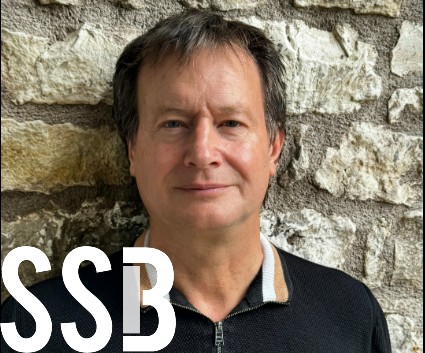
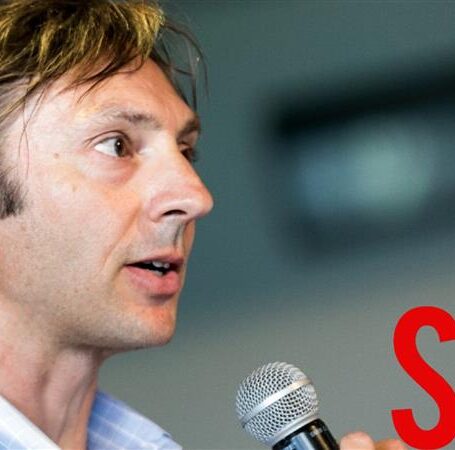
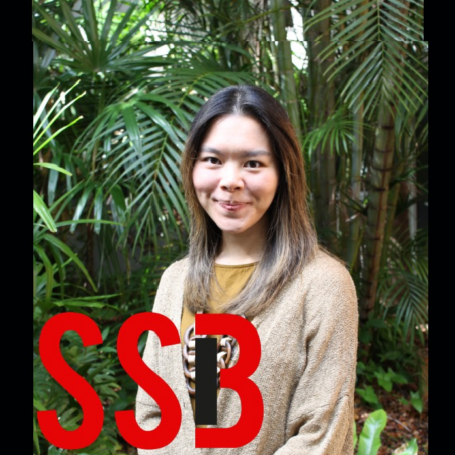
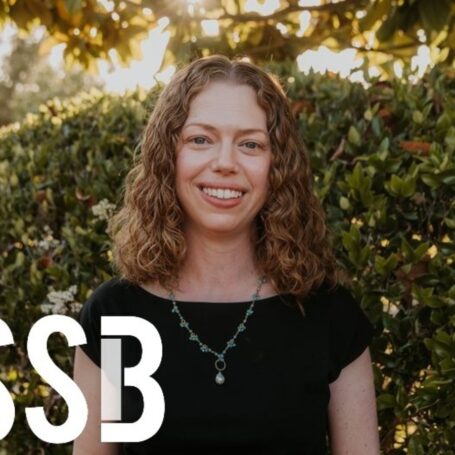
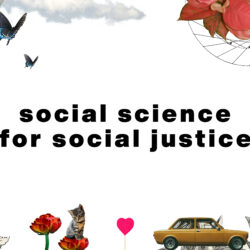
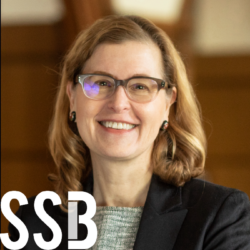
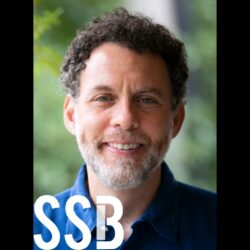





















































































The podcast featuring Craig Calhoun on protest movements discusses the formation, organization, success, and failure of protest movements, as well as their commonalities. Calhoun, an American sociologist and director of the London School of Economics and Political Science, has extensively studied protest movements throughout his academic career. In the podcast, Calhoun emphasizes that protests are a tactic used by social movements to gain media attention, put issues on the public agenda, and influence policymakers. However, protests are just one aspect of a larger process of social change. Movements involve various activities and strategies beyond protests. Calhoun provides insights into the… Read more »
I was just able to listen to this podcast and agree on the comment above. The title suggests that the podcast is about protest movements but the last ten minutes is only about the assessment of social science methodology. I would suggest a revision of the description of the podcast on the web site.
Thank you.
Interesting interview, but didn’t it veer too much from the initial subject of protest movements? I felt like the last half was all about the validity of the social sciences. BTW, how about an entire podcast dedicated to this quesition?